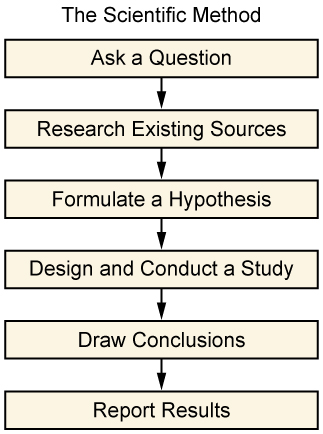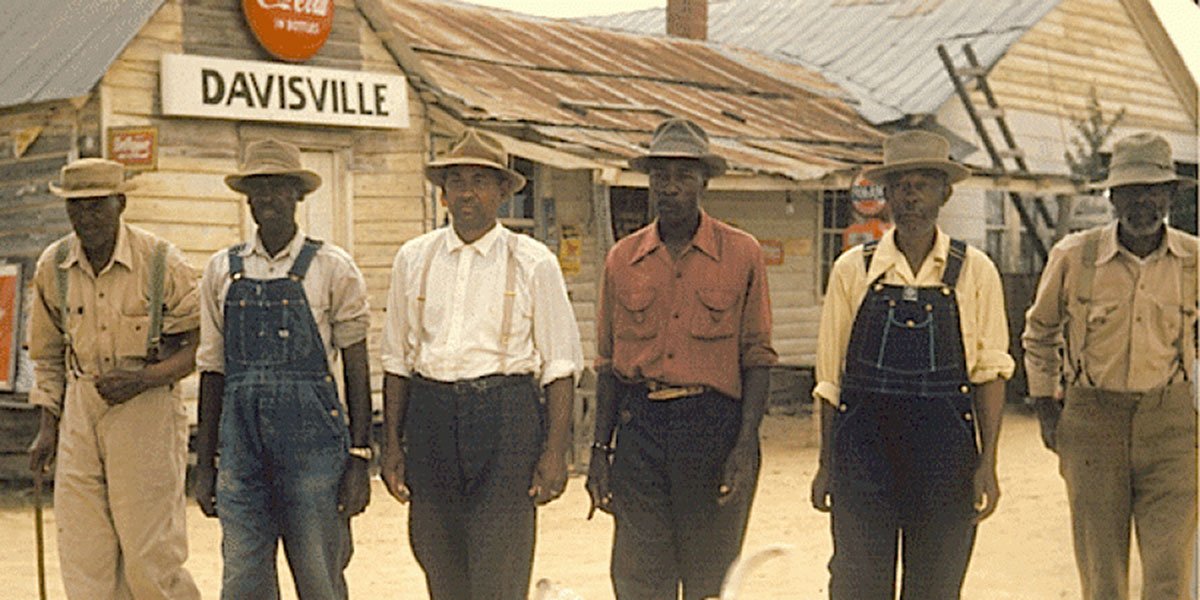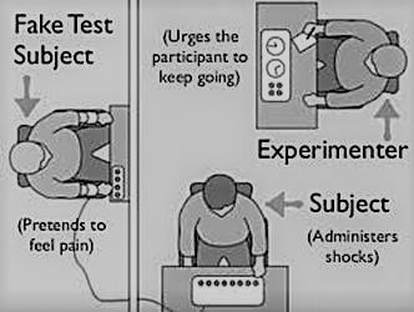2 Ch. 2 Criminological Research
Jeff Bry
Ch. 2
Criminological Research
This chapter will examine aspects of criminological research and a discussion of the United States legal system. This discussion will concentrate on an overview of research approaches and methods, also some of the steps a criminologist may take in conducting research. The discussion of the legal system will also provide an overview of the system, including various important components.
Criminological Research
Criminological research is very similar to research conducted in other social science arenas; however, the focus is generally on crime and related issues. The use of research methods and the scientific method are the same, with some variation based upon topics and questions to be asked/answered.
Most research begins with a hypothesis, or a testable “educated guess” about predicted outcomes concerning two or more variables. A very common hypothesis I hear about juvenile delinquency is a negative or dysfunctional home environment of the juvenile. While this answer may sound like a good one (or a possibility) it does not make it true. As a professor once stated to me “that sounds like an empirical question!” I think what he meant was that is a good thought, but we need to research the question to draw empirical conclusions about the topic.
Empirical evidence is the evidence your gain from direct experience, scientifically gathered data, and/or experimentation. Empirical evidence is something you can experience, not a matter of a “gut instinct” or a hunch. So, if you are interested in researching a topic such as why a young person becomes delinquent, you would first need to develop a hypothesis, then conduct research to support (or refute) your hypothesis.
An important aspect of any empirical research is the use of the scientific method. As studying people is a very complex due to the nature of aspects of environment, age, culture, race, religion and a multitude of other variables that make up human beings, special care needs to be given in research design. The scientific method includes scholarly research involving asking questions, researching existing sources, forming a hypothesis, designing and conducting a study and drawing conclusion.

Picture from Openstax Sociology 3e Attribution 4.0 International (CC BY 4.0).
Step one of the scientific method is to ask questions. Questions should be focused and narrow enough to study within a specific setting or environment, such as a specific time frame or location. The questions should also be broad enough to have value for others outside of the study participants or can inform people outside of the study environments. Most of us ask many questions in the course of our daily lives, we probably also wonder about a variety of topics issues around us. I am guessing there are issues you wonder about in terms of human behavior, why do (or don’t) people do certain things.
Step two of the scientific method is to research existing sources, called a literature review. The internet age has made this step far more accessible to more people, but also has blurred many lines regarding what a quality source is and/or research. If one were to google search almost any topic, there are plenty of material that is either not what you are looking for, or potentially not a credible source. Credible sources include published sources, such as peer reviewed journals, government or official statistics. There may be other quality sources of information, but it is important to be wary of opinion or bias in online sources.
 Picture source pixabay https://pixabay.com/vectors/search/
Picture source pixabay https://pixabay.com/vectors/search/
Step three of the scientific method is to form a hypothesis. A hypothesis is a testable educated guess about predicted outcomes between two or more variables. In the 1950’s and 1960’s researchers began to question the health effects of smoking cigarettes. As a hypothesis, researchers made an educated guess (hypothesis) smoking cigarettes increases certain health deficits such as cancer, heart disease and stroke.
In creating a hypothesis, two distinct types of variables are used, independent and dependent variables. Independent variables are the variables that cause change in the dependent variables. For example, smoking cigarettes regarding health risks, or perhaps poor school outcomes and attendance as independent variables of juvenile delinquency. Dependent variables are the outcome variables, or the variables effected or changed by the independent variables. Examples of dependent variables could be health effects (heart disease, stroke and certain forms of cancer) from smoking; or factors such as juvenile delinquency which could be affected by a variety of independent variables (poor school performance, poor school attendance, negative home environment, etc.). Keep in mind these variables are used to test your hypothesis, they may not provide sufficient evidence to support your hypothesis.

Picture source pixabay https://pixabay.com/vectors/search/
Step four of the scientific method is to design and conduct a study. Research design is generally complex; taking into account various aspects of the study you would like to conduct, including the population you would like to study and the methods to study them. Various methods can be employed in criminological research; surveys, interviews, focus groups, content analysis and secondary data analysis. Deciding which method would best fit your research focus, also viability of the method (can you get access to your population, for example people that are incarcerated?) are important considerations in conducting research.
When beginning a research project it is important to begin with an Operational definition. An operational definition allows the researcher to develop concrete steps to define the concept and steps needed to objectively measure it. An important consideration in this process is how you will approach the research. A high percentage of research is conducted as cross-sectional research, which is research conducted at one time and place. For example, providing a survey to measure how effective substance abusers feel a treatment approach is. Longitudinal research is conducted over periods of time to measure the long-term effectiveness or outcome of a program, issue or treatment.
As smoking may take years to see the effects and most early research was cross-sectional (short, one time and one place research), findings did not support the hypothesis smoking increases health risks or deficits. As researchers began to study smoking longitudinally (studied the same smokers for 5, 10, 15, 20 years) they began to see more negative effects of smoking.
In conducting research, it is important to design a study with high reliability and validity. Reliability is how likely the results of a research study will be replicated if the study is reproduced. Validity refers to how well the study measures what it was designed to measure.
Step five is to draw conclusions. As you conduct your study and tabulate and analyze results, you are then able to draw conclusions about your study. Does your research support your hypothesis, or does the research not support your hypothesis? If your research does not support your hypothesis, there are certain issues to consider.
-Could your hypothesis be wrong?
-Did your study have a faulty design?
-Did something occur you didn’t account for in your study design?
If your study does not support your hypothesis, this is not necessarily a failure. As in the example of research of smokers, a failed study may provide the researcher with insight about what to do next time. Or other researchers may gain insight and ideas from the study, which may result in additional research with a slightly different research design which may find support for the initial hypothesis.
Step six is to report your findings. Generally, the goal for most researchers is to be published in a peer-reviewed journal. However, some researchers will conduct research for government agencies or other groups that would like to learn more about a topic or issue.
Methods and Tools of Research:
Primary Source Collection involves the researchers gaining data directly, including methods such as surveys, interviews, observations, etc. Primary source collection is literally going to the “source” to learn more about issues directly. Examples could be interviewing people in certain types of treatment programs to ask about effectiveness. Observational research could be used to measure environmental or procedural issues. For example, in researching drug courts, part of the research is to observe the procedures of the drug court itself and how it operates.
Secondary Source Collection involves analyzing existing data collected by others but applying new interpretations. This approach may include conducting secondary data analysis of existing data such as the FBI’s Uniform Crime Reports (UCR). https://www.fbi.gov/how-we-can-help-you/more-fbi-services-and-information/ucr
Tools and perspectives of research include the following definitions, explaining some of the concepts mentioned in the previous paragraphs.

Picture source is pixabay https://pixabay.com/vectors/search/
Surveys collect data from subjects who respond to a series of questions about behaviors and opinions, often in the form of a questionnaire.
Population is a defined group serving as the subject of a study.
Samples are small, manageable number of subjects that represent the population.
A Random Sample is a study’s participants being randomly selected to serve as a representation of a larger population.
Quantitative Data represents research collected in numerical form that can be counted.
Qualitative Data comprises information that is subjective and often based on what is seen in a natural setting.
An Interview is a one-on-one conversation between the researcher and the subject.
A Focus Group is a small group interview between the researcher and a small group of subjects.
Observational Research is research conducted in an environment, with the intention of gaining insight into the workings of the environment.

Picture source is pixabay https://pixabay.com/vectors/search/

Picture from pixabay.com
In a Student’s Own Words:
Question: How would a researcher minimize bias?
“I feel like most researchers would pick a research topic that they have a genuine interest in solving, which you would think would result in them choosing a general population to conduct their experiments or researching in an unbiased form. Bias is a common thing that is in every aspect of life, especially among scientists and scholars conducting experiments or journals. Overall a way to reduce bias in criminological research is just fact-checking a peer’s work. Also, only recording the results as is on your own work is important.”
Field Research is a form of primary data collection. The researcher gathers data from the natural environment, without the need for a lab experiment or survey. Examples of field research in criminology may include spending time in locations with known criminal elements or high levels of criminal behavior. It may also include spending time in treatment facilities, jails, prisons or other facilities and/or institutions to understand the working of the environment. Field research generally does have a plan or objective, the researcher does not just “wander” or walk into a facility or institution without a plan. However, in field research the approach may be less formal, also lacking certain elements of control.
A method of field research is participant observation. In this approach, the researcher becomes a part of the group to gain an “insider” perspective from the viewpoint of a participant. This allows the researcher to see the issue from the vantage point of the subject.

Story from Author Jeff Bry:
“My first experience with field research was a study I conducted at a juvenile correctional facility. I was a 23 year old graduate student, fairly inexperienced with facilities and their rules My intention was to observe behavior of the staff and students in the facility, in an attempt to measure how therapeutic the interactions and environment were. My intention was to spend a day in each of the four cottages of the facility. I was briefed by the facility director before I began my research; he informed me if there was an altercation between students or a student attempted to abscond from the facility, I would be expected to assist the staff. This was shocking to me but was a part of the culture and expectations of the facility. Thank goodness nothing happened!”
Secondary data analysis uses data collected by others but allows new interpretations to this data. An example of secondary data analysis includes nonreactive research. Nonreactive research does not include direct contact with subjects and will not alter or influence the subject’s behavior. Content analysis is another form of secondary data analysis. Content analysis applies a systematic approach to record and value information taken from secondary data as it relates to the study at hand. An example of content analysis could be reviewing anti-gang literature to analyze the message and intention of the program or approach.
In terms of conducting criminological research, much of what we can share and discuss comes in terms of correlations. Correlations are when a change in one variable coincides with a change in another variable, but does not necessarily indicate causation. For example, there is a correlation between cigarette smoking and certain types of illness and disease. If every cigarette smoker got cancer, that would be causation. For most criminological research, we speak mainly in correlations. There is a correlation between school performance and delinquency, but that does not imply every student who struggles in school becomes delinquent.
Sociologist Max Weber discussed the importance of being neutral in conducting your research. Any bias brought into a research study will skew the results of the study. The perspective of value neutrality and remaining objective is extremely important in any type of research. Value neutrality is to remain impartial while collecting, analyzing and reporting results. This can be difficult, especially if your area of research is one that is very important to you or you have a personal connection to. Often researchers will conduct research in teams to minimize the risk of bias in research.
Aspects of ethical considerations in research is borrowed from Openstax sociology 3e, https://openstax.org/details/books/introduction-sociology-3e Attribution 4.0 International (CC BY 4.0).
Ethical Considerations in Research:
When conducting research, there are ethical considerations to your research. Each social science discipline has similar ethical standards, below are the American Sociological Associations (ASA) standards.
Maintain objectivity and integrity in research.
Respect subjects’ rights to privacy and dignity.
Protect subject from personal harm.
Preserve confidentially.
Seek informed consent.
Acknowledge collaboration and assistance.
Disclose sources of financial support.
The Tuskegee Experiment, were ethics considered?

Study included 600 African American men, including 399 diagnosed with syphilis who were never informed of their diagnosis.
Penicillin was distributed in the 1940s as the cure for the disease, but the men were not given the treatment because the objective of the study was to see “how untreated syphilis would affect the African American male” (Caplan, 2007). They were told the study would last 6 months; it lasted 40 years.
As a result, dozens of the men died directly of syphilis, dozens also infected their significant others, and at leas 19 children were born with congenital syphilis.
Stanford Prison Experiment, were ethics considered?

Stanford Prison Experiment: Students played roles of incarcerated people and correctional officers. Some played their roles too well. Several later admitted they were coached or weren’t acting authentically.
Milgram’s experiment, were ethics considered?

Students believed they were administering pain to subjects, and were pressured to keep administering the pain. This led to extreme distress among some of the research subjects.

In a Student’s Own Words:
Question: How do you view criminological research?
“There are numerous research methods/designs that one can choose regardless of what field one is conducting the research in. Criminology, sociology, psychology, economics are all roots that branch into each other and in some ways, your research will include pieces from each discipline. I don’t believe that one can truly study the behavior of an individual without each of these disciplines playing a role as our subject is the totality of his or her past and present life experiences.
Prior to beginning any research project one must determine what method will they use to collect the data needed to address the question they are asking. Will they base their research on a qualitative, quantitative or a combination of both? What is the question they want addressed? What is the theory? What is the hypothesis that will form the foundation of the study?
Below are the steps that I would follow when preparing to conduct research.
Define the research question. What is the topic i am interested in? What is the question or problem that I want to address?
I would being by conducting a review of literature to determine what the current knowledge base is on my topic? Do I notice gaps in the information? In the statistic reviewed? This step can help when I develop my hypothesis.”
Summary:
This chapter gives a snapshot of some of the important aspects of criminological research. As research can be complicated (and perhaps uninteresting) for many students, my hope and intention is to provide a digestible amount of content which will allow the student to better understand how and why research is conducted.
References
Aspects of ethical considerations in research is borrowed from Openstax sociology 3e, https://openstax.org/details/books/introduction-sociology-3e Attribution 4.0 International (CC BY 4.0).
Gottfredson, M. R., & Hirschi, T. (1990). A General Theory of Crime. Stanford University Press.
